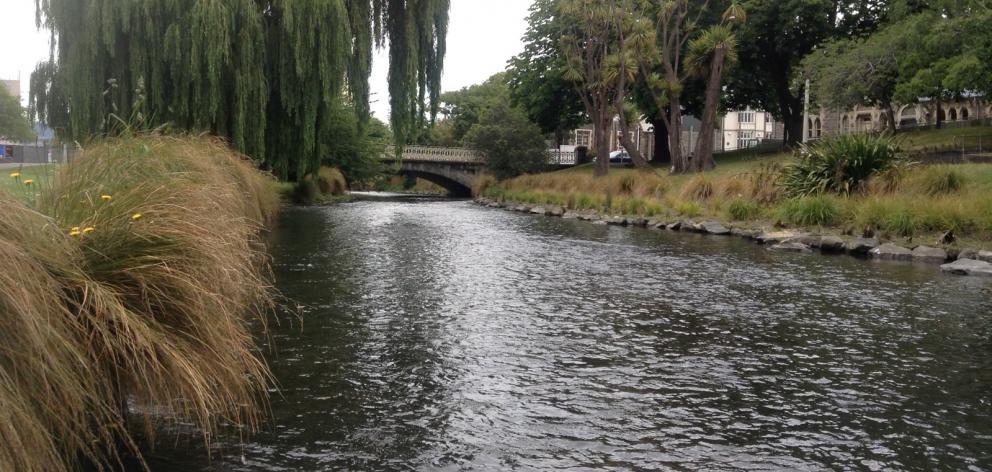Top Stories
Canterbury’s Swimming Spots Face Safety Concerns as Pollution Rises

Recent data reveals that nearly a quarter of swimming locations in Canterbury, New Zealand, are unsafe for recreational activities such as swimming, paddling, and playing. The 2024-25 water quality report from Environment Canterbury (ECan) indicates that the percentage of sites passing health standards remains unchanged from the previous year. Monitoring conducted last summer assessed 52 freshwater and 47 coastal locations, evaluating suitability based on bacterial contamination levels, specifically enterococci for coastal waters and E. coli for freshwater.
According to the report, sites are graded not as definitive prohibitions but as indicators of risk. Dr. Elaine Moriarty, acting chief scientist at ECan, explained, “They never say to go or not to go. It’s what’s the risk attached, and the public makes that decision.” She noted that individual circumstances, such as health conditions or age, influence whether a person chooses to swim in potentially contaminated waters.
The health risks associated with high bacteria levels are significant. Dr. Cheryl Brunton, Canterbury’s Medical Officer of Health, warned that elevated bacteria can lead to ailments such as gastroenteritis and infections affecting the ears, eyes, skin, and respiratory tract.
Canterbury’s coastal sites recorded an impressive 85 percent pass rate, consistent with the previous year and an improvement from 77 percent in 2022-23. While all open coast beaches met safety standards, only 67 percent of harbour sites were deemed safe. In contrast, freshwater sites demonstrated lower suitability, with 71 percent passing the health assessments, including 87 percent of lake sites and just 64 percent of river sites. Dr. Moriarty noted that rivers, particularly in urban and agricultural catchments, present ongoing challenges.
Among the freshwater sites, two experienced improvements in their grades, while six others received lower grades, with half of those classified as unsuitable. The most concerning sites included the Avon-Heathcote Estuary/Ihutai at Humphreys Drive and the Ashley River/Rakahuri Estuary, both rated as unsuitable. In Lyttelton Harbour, five sites faced similar issues, although the Cass Bay boat ramp and Charteris Bay/Te Wharau at Paradise Beach received fair ratings.
A multi-year investigation into contamination at Lyttelton Harbour, involving regional and city councils, Te Whatu Ora, and local iwi, is currently underway. Dr. Moriarty stated that testing, along with public education efforts and Faecal Source Tracking, have been implemented to identify sources of contamination.
Marnie Prickett, a researcher at Otago University, emphasized the importance of understanding water quality trends for public awareness. She cautioned that ongoing changes to wastewater standards and freshwater policy could exacerbate pollution in beloved swimming areas. “Canterbury is facing even worse pollution of swimming holes through dairy expansion and lower wastewater standards,” she said. “The public needs to be aware that things could get worse if regional councils do not confront the short-termism of the current government.”
Groundwater testing has also revealed troubling trends, with E. coli detected in 14 percent of samples, an increase from 9 percent the previous year. While Dr. Moriarty acknowledged that the council has detailed information regarding water quality trends, she noted that immediate data on bacterial counts within grades was not readily available.
Last summer, health authorities issued 46 temporary public health warnings across 41 sites, including 28 warnings for faecal contamination and 18 for toxic algae. Toxic algae, specifically cyanobacteria, can pose severe health risks to humans and animals, leading to symptoms such as rashes, nausea, and in extreme cases, seizures or liver damage.
Prickett criticized the framing of cyanobacteria as “naturally occurring,” arguing that it overlooks the significant human contributions to rising toxin levels in waterways. She urged more transparency from the regional council regarding its management of activities contributing to this problem.
Dr. Moriarty acknowledged that while cyanobacteria levels are increasing, multiple factors contribute to this trend. “It’s a complex relationship,” she explained, noting that water quality and temperature play crucial roles. Warmer summers can lead to higher counts of naturally occurring bacteria due to stagnant water.
The report recommends implementing permanent signage at two dozen sites to inform the public about water safety. In response to ongoing concerns, ECan is introducing a new predictive water-quality model for select sites in Lyttelton Whakaraupō and Akaroa Harbours. This model, expected to be operational this summer, aims to provide real-time updates based on rainfall, wind direction, and tides, combined with historical data.
Dr. Moriarty expressed optimism about this system, which will allow for more accurate assessments of water quality rather than relying solely on historical data. “Instead of blanket unsafe warnings that might last for days or even the whole summer, people will get information that responds to changing conditions,” she stated.
It remains crucial for the public to heed health advisories, particularly avoiding swimming for 48 hours after rainfall, as runoff can introduce harmful bacteria into waterways. Residents are encouraged to check the Land Air Water Aotearoa website for real-time updates on swimming safety in their areas.
-

 Sports2 months ago
Sports2 months agoNetball New Zealand Stands Down Dame Noeline Taurua for Series
-

 Entertainment2 months ago
Entertainment2 months agoTributes Pour In for Lachlan Rofe, Reality Star, Dead at 47
-

 Entertainment4 weeks ago
Entertainment4 weeks agoNew ‘Maverick’ Chaser Joins Beat the Chasers Season Finale
-

 Sports7 days ago
Sports7 days agoEli Katoa Rushed to Hospital After Sideline Incident During Match
-

 Sports2 months ago
Sports2 months agoSilver Ferns Legend Laura Langman Criticizes Team’s Attitude
-

 Politics1 month ago
Politics1 month agoNetball NZ Calls for Respect Amid Dame Taurua’s Standoff
-

 Entertainment2 months ago
Entertainment2 months agoKhloe Kardashian Embraces Innovative Stem Cell Therapy in Mexico
-

 Sports4 days ago
Sports4 days agoJamie Melham Triumphs Over Husband Ben in Melbourne Cup Victory
-

 World3 months ago
World3 months agoPolice Arrest Multiple Individuals During Funeral for Zain Taikato-Fox
-

 Sports3 months ago
Sports3 months agoGaël Monfils Set to Defend ASB Classic Title in January 2026
-

 Entertainment1 month ago
Entertainment1 month agoTyson Fury’s Daughter Venezuela Gets Engaged at Birthday Bash
-

 Sports1 month ago
Sports1 month agoHeather McMahan Steps Down as Ryder Cup Host After Controversy















